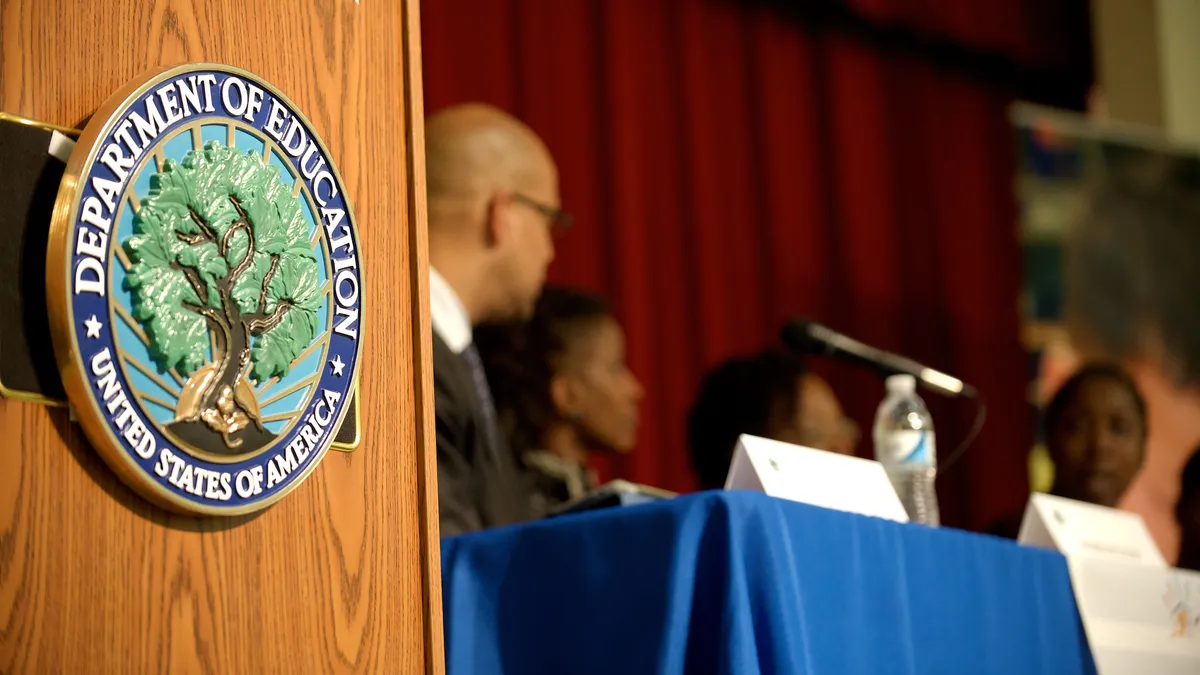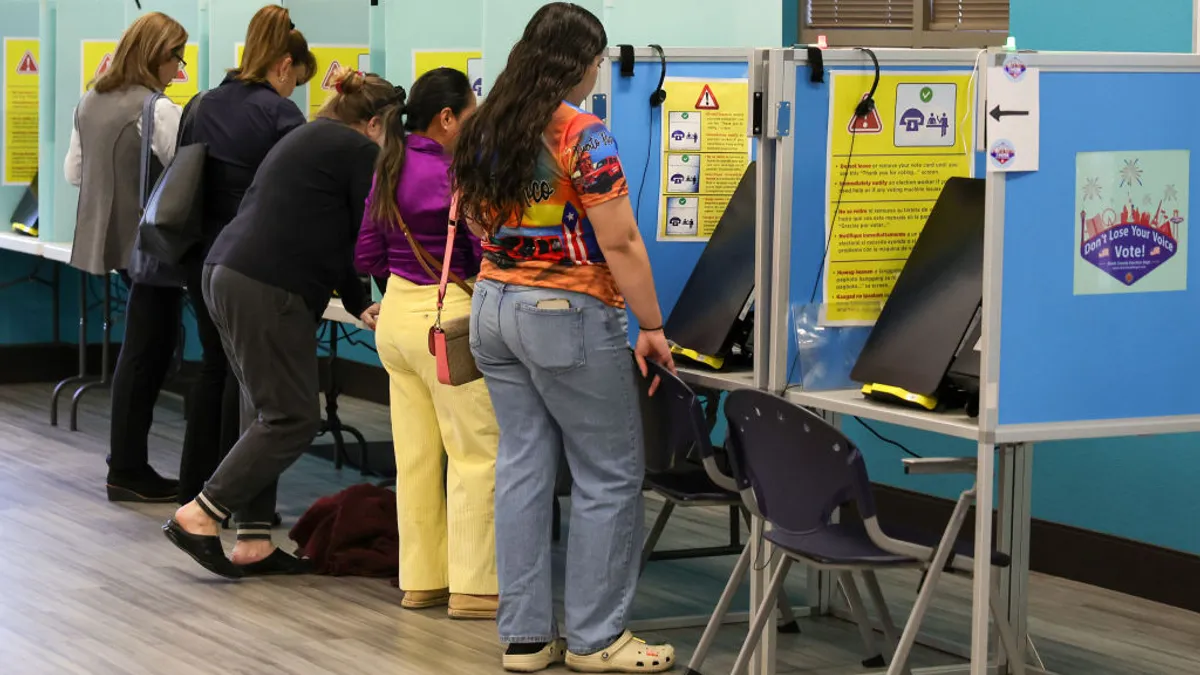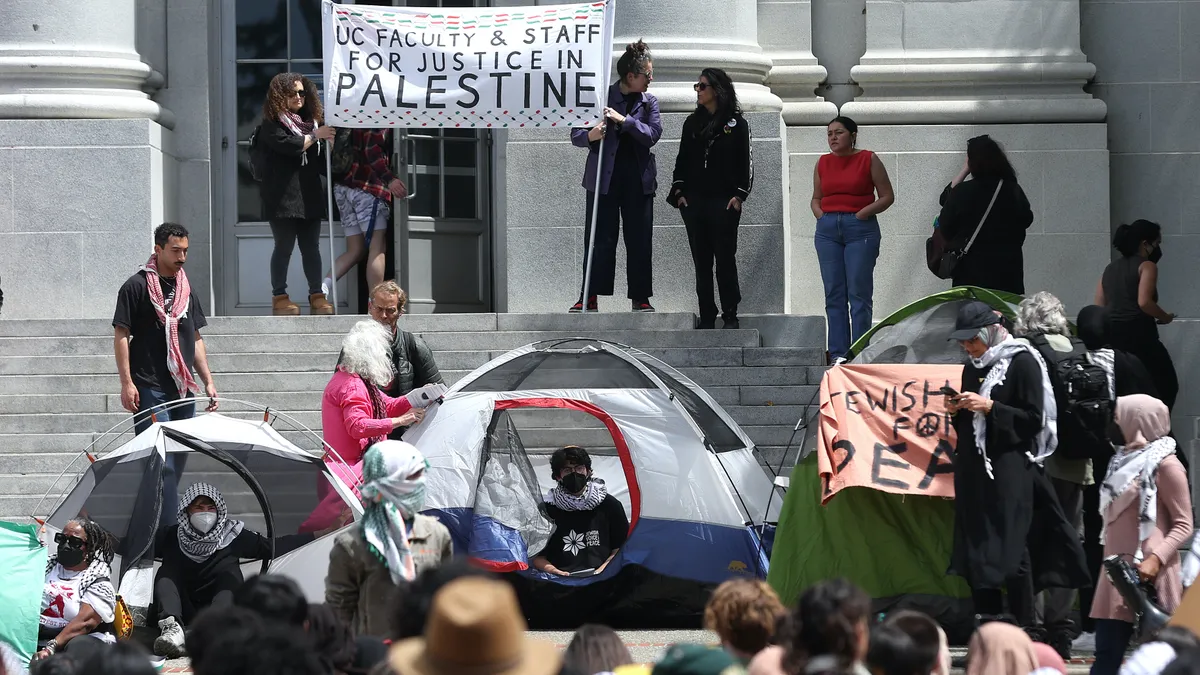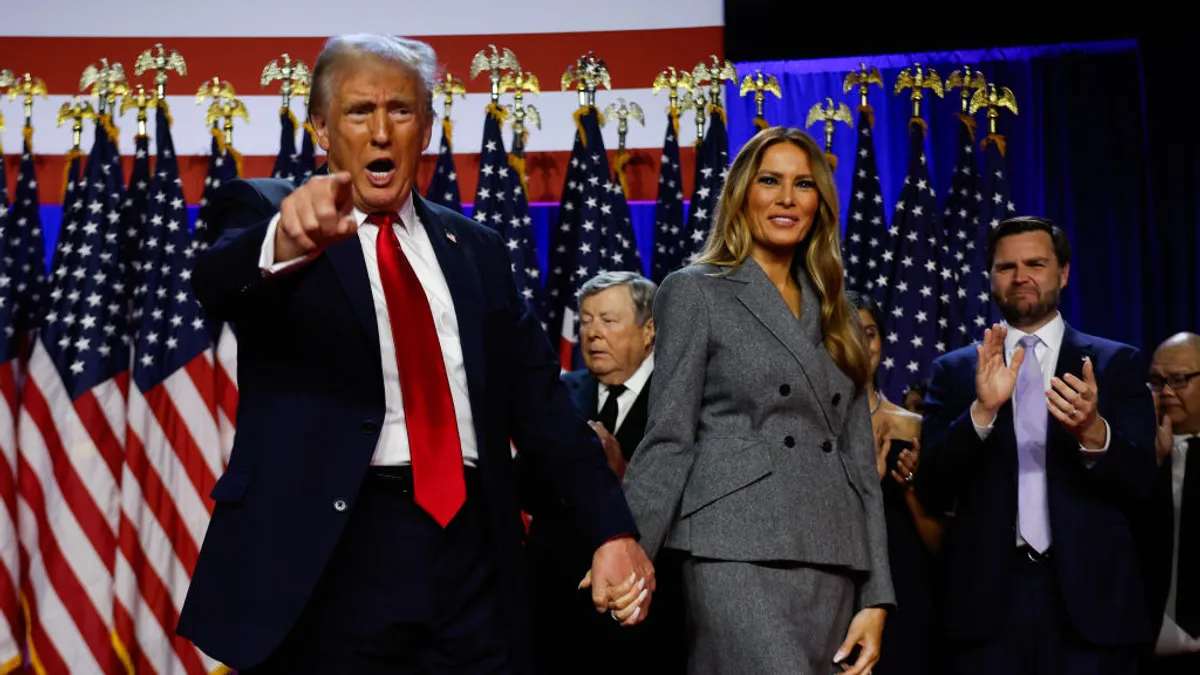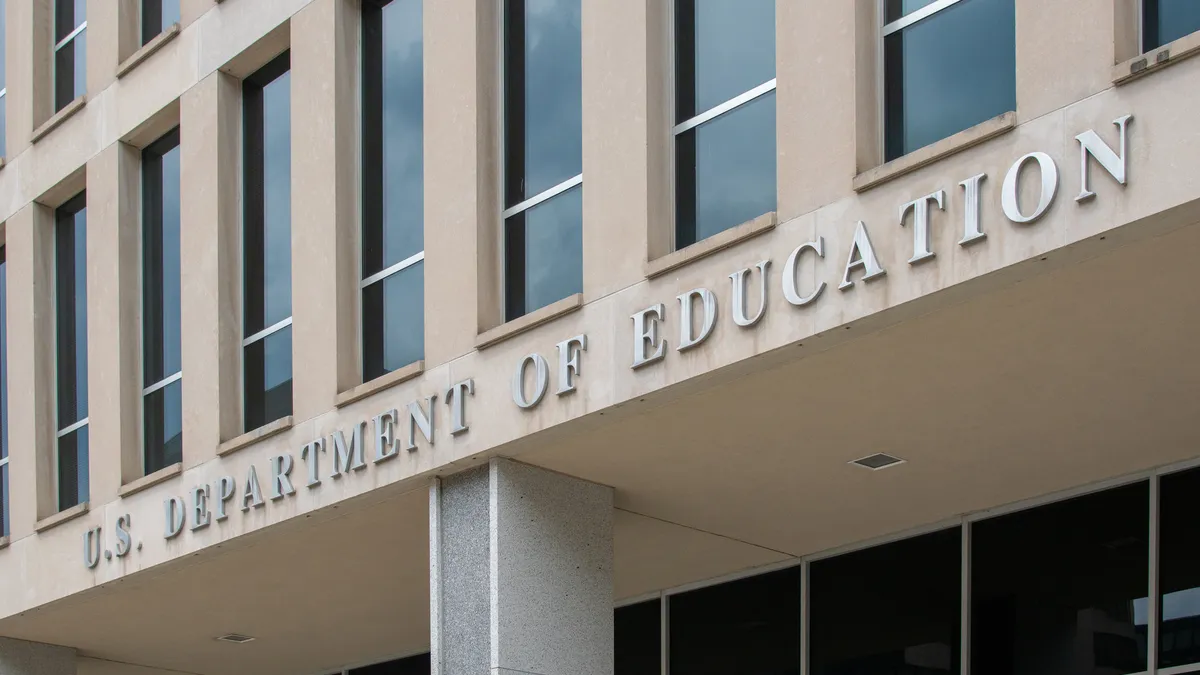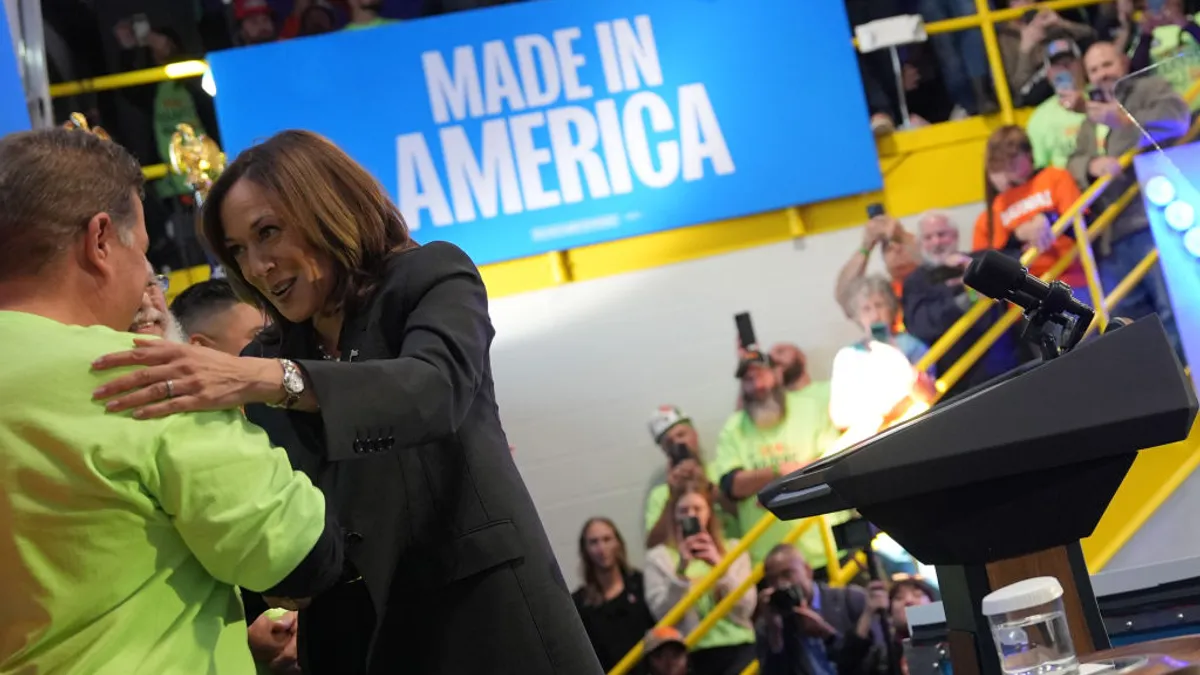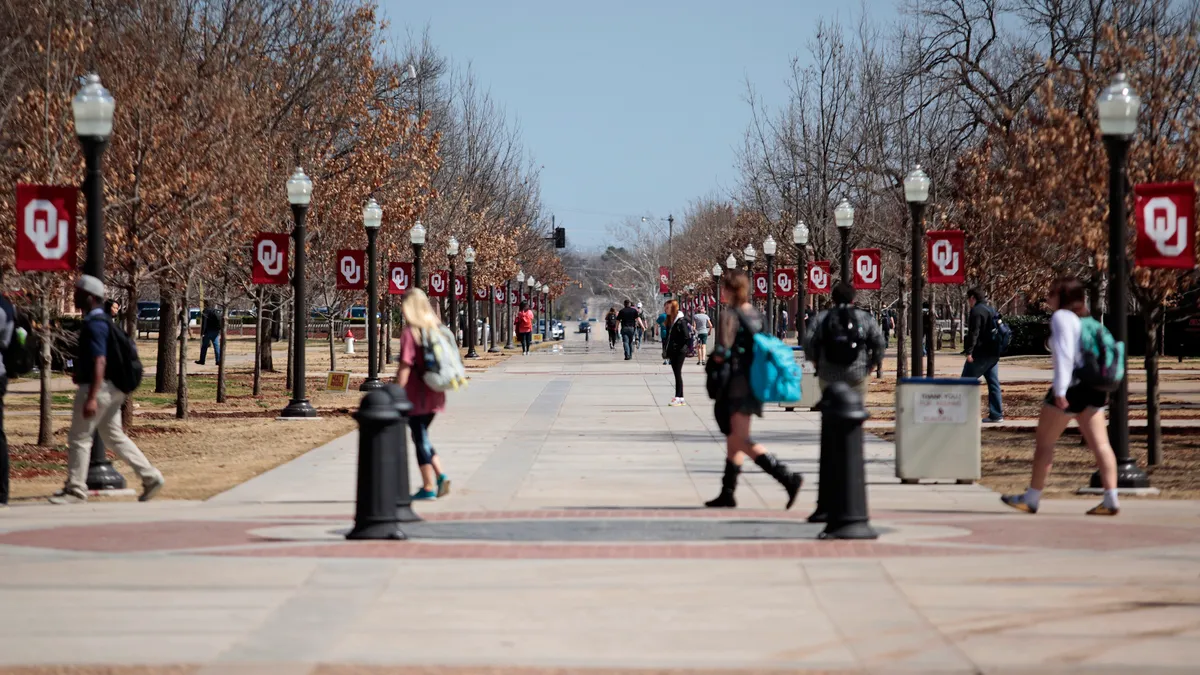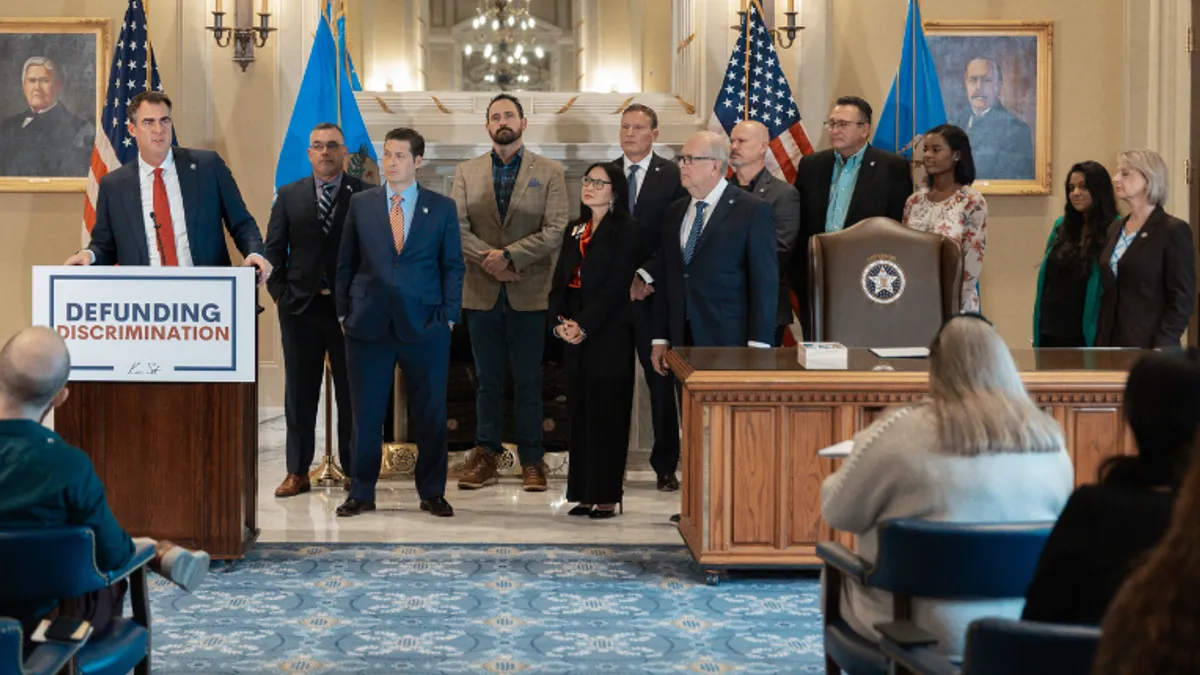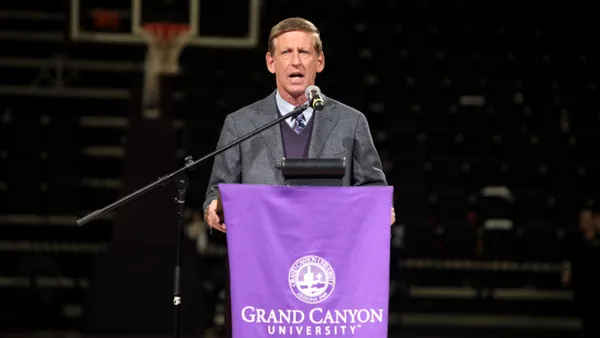College career education programs would once again need to prove they would not saddle students with ruinous amounts of debt under regulatory proposals the U.S. Department of Education released late Wednesday.
Institutions that continually fail debt-to-earnings tests under what’s known as the “gainful employment” rule could see their federal financial aid funding pulled.
The long-awaited draft regulation — which mirrors a now-defunct rule issued in 2014 — immediately drew condemnations from the for-profit sector that it unfairly targets proprietary institutions. This echoed criticism for-profit colleges made about the original rule, which the Trump administration revoked four years ago.
But the Education Department on Wednesday went further than the accountability policies former President Barack Obama introduced almost a decade ago, proposing to collect and publicize data like student earnings from all colleges.
The draft regulations reflect concerns around the ballooning costs of higher education and fears that a college credential might not hold much value — especially from for-profit institutions with shoddy student outcomes.
The proposal would evaluate career education programs on two metrics.
One, colleges would need to prove that half of their graduates earn more than a “typical” high school graduate who never attended college, the Education Department said. This would vary by state.
And second, institutions would have to show students can afford their student debt payments. Under the proposal, graduates could only devote up to 8% of their annual earnings to paying down their student debts, or 20% of their discretionary income, which the Education Department bases on salary and federal poverty guidelines.
Colleges that fail either of these tests once would need to disclose to students they are at risk of losing federal financial aid. If they flub the same standard twice in a three-year period, they would lose access to federal aid.
James Kvaal, the department’s top higher ed official, said in a statement Wednesday the problem of leaving students with unaffordable debt “is concentrated at for-profit and career colleges.”
Career Education Colleges and Universities, the association representing for-profit institutions, clapped back at this accusation Wednesday. CECU’s president, Jason Altmire, said in a statement that the department should hold all colleges — public, private nonprofit and for-profit — accountable under the rule.
“CECU is disappointed that the Department did not take into account stakeholder feedback and failed to implement substantive changes to its gainful employment proposal, which continues to exempt the majority of postsecondary education programs and fails to protect millions of students,” Altmire said.
The Education Department will formally publish the regulatory proposal Friday and accept public comment for a month. The agency aims to finalize the rule by November with the goal of having it take effect in July 2024 — though this could prove challenging given the typical sluggishness of the regulatory process.
A senior department official said Wednesday the agency is confident, however, that it will make the November timeline.
Gainful employment, a history
The gainful employment rule has a contentious history. The Obama administration first crafted the policy in 2014 out of concern for career program graduates who couldn’t land jobs that could let them pay off their student loans.
Like the Biden administration’s new proposal, the Obama-era version of the regulation allowed the federal government to yank financial aid funding from colleges with poor debt-to-earnings ratios.
However, that iteration of the rule didn’t last long. Former Education Secretary Betsy DeVos rescinded the regulation in 2019 after delaying portions of it from taking effect.
DeVos, a supporter of for-profit colleges, said the rule was unfairly slanted against them. That’s despite that they accounted for a disproportionate share of institutions that didn’t meet the debt-to-earnings threshold.
Of the roughly 32,000 academic programs that would be subject to the newly proposed regulation, about 1,800 would fail one of the two proposed tests, the Education Department estimated. It said Wednesday it forecasted that the proposal would protect more than 703,000 students a year from enrolling in these programs.
More than half of for-profit colleges have at least one program that wouldn’t meet one of the two standards, the Education Department said. Meanwhile, 93% of public institutions and 97% of private nonprofit institutions have no failing programs, it said.
What else is the Education Department doing?
The Biden administration also proposed gathering new information from all institutions, including tuition and fee costs, how much students typically borrow, and licensure requirements.
The Education Department would publish this information on a new website. Students who want to attend a college with poor-quality outcomes would need to sign off that they viewed disclosures on the site before they took out loans.
The department already collects some institutional data for programs like the College Scorecard, a consumer tool website that publicizes student earnings, and the Integrated Postsecondary Education Data System, known as IPEDS, a public-facing database often used by researchers that contains statistics like enrollment.
A senior department official said the agency doesn't want to overburden colleges with reporting mandates, but that institutions already provided some of this information under the previous version of the gainful employment rule.
While the department does maintain some public databases, the official said, information on them can be lacking — for instance, little is known about how much debt graduate students are taking on, which is a growing concern.
Separate from the newly proposed website, the Education Department said it wants to put out a “watch list of the least financially valuable postsecondary education programs, focusing on the programs that play an outsized role in burdening graduates with unaffordable debts.”
In fact, the department already announced its intention to pursue such a list earlier this year, seemingly building off of an idea Obama had to publicly rate all colleges.



